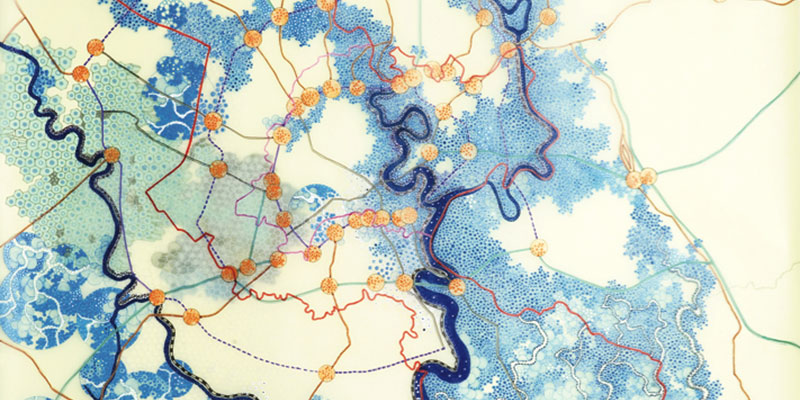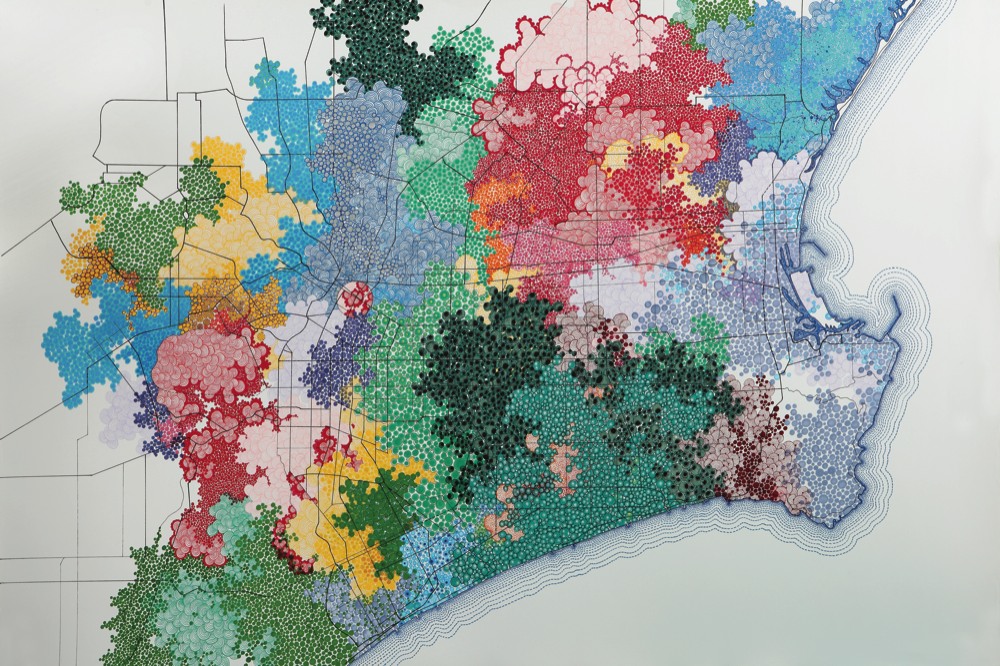Tiffany Chung’s models allude to a sort of collage-city. Her buildings have been taking on different samples from the cities of the world, or representations of these suburbs in people’s imaginaries. From the doll’s house to the pastel-coloured pop that lit up Robert Venturi. These are sculptures of urban possibilities that speak, too, of return: the journey back to the Vietnam of her birth. Yet in the place of going back to her origins, what shines out of this return is devotion for US culture, for the edifications of the old enemy. The city seems to be looking outwards in inverse relationship with Chung’s coming back in. This, then, is no doctrinaire city – prisoner of its famous war (the most famous, at least, as it was not the only one in the country’s history) – but a city that seeks, by any means possible, to look at the world. Hence, the fortuitous city – and which city is not that? – presented to us by this pastel urbanism. An architecture in which, frequently, interior and exterior are not separated.
There is no need to warn that this is a very fragile city where any skyscraper can be leveled in one lurch. It is a postmodern, anachronistic citu, eighties-style, a city rendezvous with gentle, sweet buildings. A happy world that is of course loaded with irony. A city, in the end, where pop seems to have achieved what the B-52s failed to do in the Vietnam War.
Iván de la Nuez









